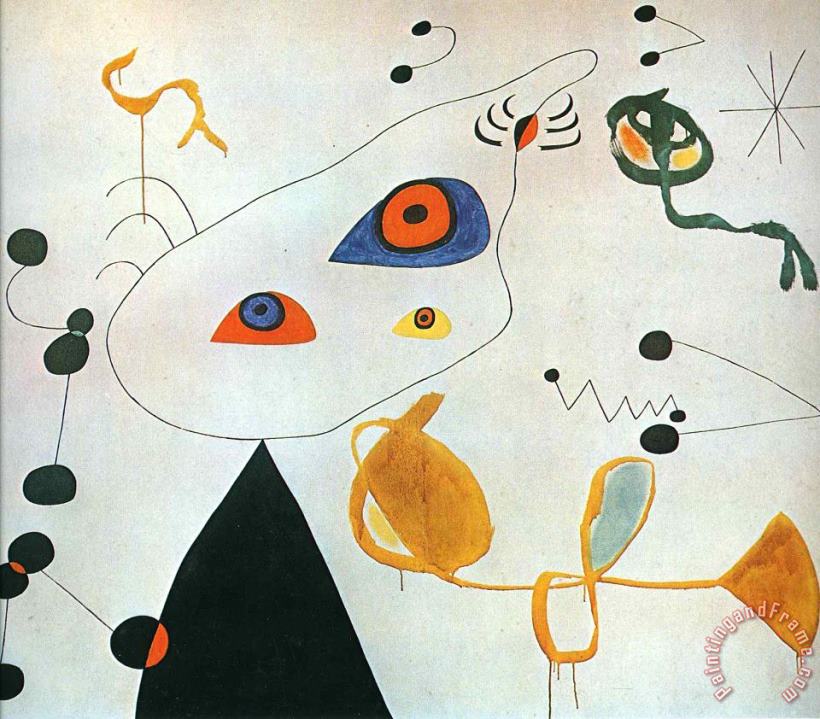
Many art critics believe this painting captures the human subconscious mind and was a way for Miró to visualize some of his own life experiences. There are even music notes that appear to float in the air like living beings. He once reported, “I used to come home in the evening without having eaten anything.”ĭepicted playing and dancing, the other characters throughout the composition seem to be having a wonderful time. The hole in the character’s stomach perhaps references Miró’s own hunger and poverty at the time he created the painting. In this form of theater, the harlequin is a foolish character who is constantly unsuccessful in love. The figure depicted in the central-left portion of the canvas-with a half red, half-blue mask and diamond pattern on their tunic-references Italy’s commedia dell’arte. It depicts a festive, crowded scene where abstract characters seem to be caught up in a celebration. Harlequin's Carnival is an early example of Miró’s surrealist works, and it also features some of the artist’s first biomorphic forms. “It has in it all that you feel about Spain when you are there and all that you feel when you are away and cannot go there.” “I would not trade it for any picture in the world,” Hemingway once wrote. Miró was friends with Ernest Hemingway, and the writer purchased The Farm and kept it throughout his life. Featuring references to both Catalan folk art and Cubism, this hybrid-style painting was made shortly before Miró turned towards Surrealism. Miró considered The Farm among his most important works, as it marked a turning point in his style. I wanted to put everything I loved about the country into that canvas-from a huge tree to a tiny snail.” Miró explains, “ The Farm was a résumé of my entire life in the country. The artist’s paintings during this time were often described as “detailist” due to the sheer amount of motifs and elements he fit onto the canvases.
Miro painting full#
Packed full of animals, farm equipment, and plants, The Farm depicts a view of Miró’s family property in Mallorca.



A post shared by Fundació Joan Miró, Barcelona on at 5:33am PST


 0 kommentar(er)
0 kommentar(er)
